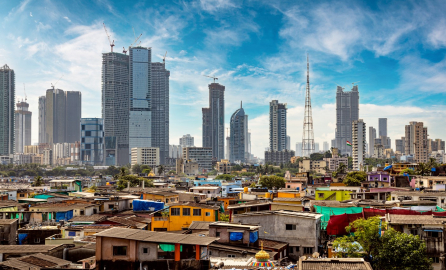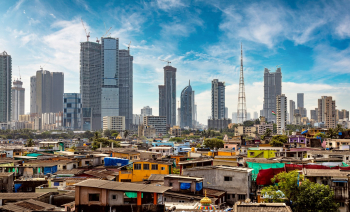Article originally published in the public group Fighting Inequalities through development cooperation and stronger partnerships
The fight against inequality1 – both within and between countries – is central to the European Union’s strategy to achieve the United Nations’ 2030 Agenda for Sustainable Development. The EU’s priority to reduce inequality is also reflected in European texts and legislation, ranging from the third chapter of its Charter of Fundamental Rights, to the Treaty of Lisbon and the European Consensus on Development. Development cooperation to help reduce inequality in partner countries is more crucial than ever, as the COVID-19 pandemic may have undone years of progress in some parts of the world.
With all this in mind, INTPA.G4 (Social inclusion & Protection, Health & Demography) has released a new publication Addressing Income Inequality through Development Cooperation: A Quick Guide (henceforth, Inequalities Quick Guide). The publication follows and builds on the more detailed reference document Addressing income inequalities through development cooperation2 (henceforth, Inequalities Reference Document). The Inequalities Quick Guide summarises and visualises the key information of the latter – particularly relevant to DG INTPA, DG NEAR and EEAS staff (in headquarters and EU delegations) involved in programming, identifying, formulating and managing the implementation of programmes.3
|
Lessons learnt - Inequality reduction as a tool for cooperation |
1. Inequality is a key barrier to reducing poverty

Economic growth in countries with high inequality levels doesn’t necessarily decrease poverty, as it tends to be absorbed by the wealthier segments of the population. Additionally, tackling inequality actually reduces poverty, as any improvement towards a more equal distribution mechanically improves income at the poorest level. It follows that reducing inequality yields a dual benefit: it accelerates growth while increasing its capacity to reduce poverty.
Economists use the analogy of the poverty-growth-inequality triangle to illustrate how decreasing inequality accelerates poverty reduction. There is a precise relationship between the three vertices of the triangle in any given country. In practical terms, it means that reducing poverty implies a combination of growth and targeted redistribution policies that reduce inequality. The important takeaway is that growth policies that do not include redistribution of wealth have little impact on poverty rates.
2. Inequality reduction is central to achieving the Sustainable Development Goals (SDGs)
Empirical evidence shows that income inequality is an obstacle to achieving many SDGs. Inequality slows the fight against poverty (SDG1) and hinders working conditions and sustainable growth (SDG8), but also hinders other struggles for peace, gender equality and protecting life on Earth.
Inequality is a threat to peace, democracy and to the quality of institutions (SDG 16) in general, because it undermines their legitimacy by weakening social cohesion, trust in government and community resilience. High income inequality also means that economic interest groups have a disproportionate influence over democratic processes; where decisions about financial and environmental health regulations are concerned, this tends to undermine sustainability. Inequality facilitates corruption and abuses of power, further eroding good governance. Even more critically, horizontal inequality (between groups) is linked to conflicts and violence.

Inequality has a visible negative impact on the sustainable management of natural resources and ecosystems (forest, wetlands, fisheries, etc.) and has led to an accelerating biodiversity crisis. A stark example is poaching and illegal logging, be it for subsistence or income from black markets. Aside from uncontrolled biodiversity losses, both poverty and inequality drive human activity into increasingly more secluded areas, where zoonotic pathogens like the COVID-19 pandemic originate. In the longer run, disadvantaged groups and ecologically vulnerable populations will bear the brunt of the disasters associated with climate change. Inequality worsens their resilience to the changes expected from a warmer climate and magnifies the risk by slowing down climate change mitigation. This directly threatens the SDGs relating to protecting our climate (SDG13) and life, whether in the oceans (SDG14) or on land (SDG15).
Finally, inequality locks women and girls into unequal power relations, limiting their access to political power and decision-making as well as impairing their autonomy and freedom. Exclusion, discrimination and violence towards women tend to be higher in more unequal societies. Moreover, gender inequality is often aggravated when women experience other forms of exclusion, for instance because of their age, disability, ethnicity, sexual orientation, religion or geographical location. This is a direct threat to SDG5.
An executive summary
The Inequalities Quick Guide reflects the ongoing efforts of the EU to strengthen its approach to development cooperation in order to address inequalities in partner countries. By providing an overview of the main points of the Inequalities Reference Document, the Quick Guide offers an introduction and definition of concepts. It also outlines a methodological framework against inequality and shows how inequality can be tackled through development cooperation.
Read Addressing Income Inequality through Development Cooperation: A Quick Guide.
Like comment and share your article with your peers
|
Resources
|
1 The unequal distribution of wealth, rights and opportunities is defined as inequality. Unlike poverty, which focuses on those who live under a minimal level of income and living standards (i.e. the poverty threshold), inequality refers to differences across the whole population, or between and within groups. Inequality and poverty are connected since both are linked to the distribution of resources, but low-poverty-rate societies can also be highly unequal. Accordingly, policies to reduce poverty can leave inequality unaffected if they are not well calibrated.
2 The reference document Addressing income inequalities through development cooperation was released in October 2021 and consists of three volumes: Volume 1: Concepts and Definitions, Volume 2: Policy briefs to tackle inequalities, Volume 3: Guidelines for mainstreaming the reduction of inequality in interventions.
3 The Quick Guide can also potentially assist all professionals working towards the reduction of inequalities around the world, including national cooperation agencies, NGOs, EU Member States and other donors.








Log in with your EU Login account to post or comment on the platform.